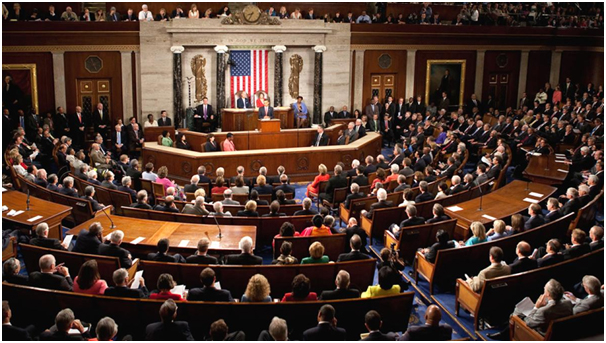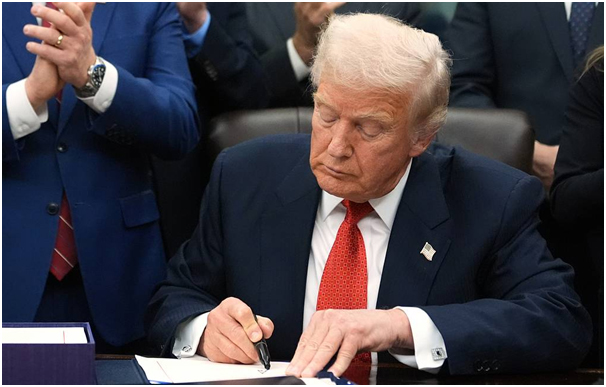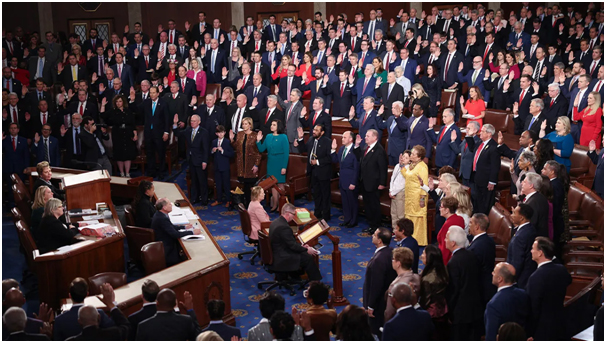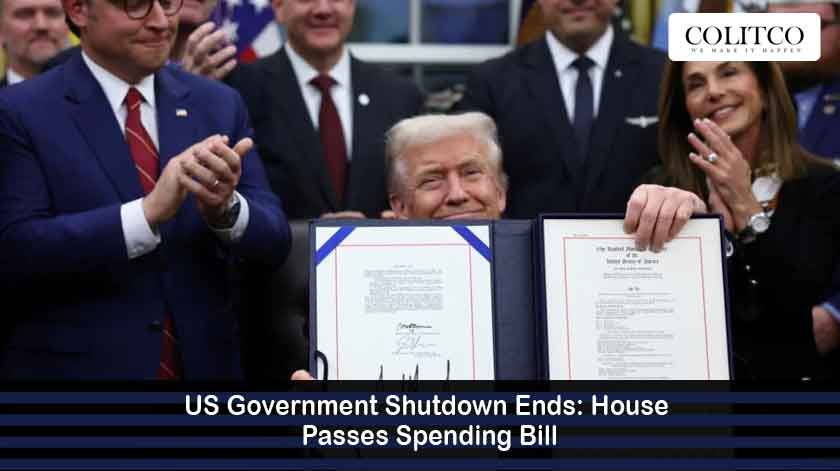The US government shutdown is officially over, as the House of Representatives passed a new spending bill. President Donald Trump signed the legislation, which reinstated federal activities after a 43-day shutdown. Many hundreds of thousands of workers and vital services were impacted by the shutdown, which has halted many government functions.
House Approves Funding Bill
The funding bill was passed in the House of Representatives by a vote of 222-209. The vote was overwhelming on the republican side, with the democrats voting against the bill. The major opposition was that there were no long-term subsidies for healthcare in the package.

Members of the House of Representatives vote on the spending bill to reopen government operations
The vote follows the Senate’s passing of the bill earlier in the week. It also guarantees the resumption of services that were halted due to the shutdown, such as federal payrolls, air-traffic control and food assistance programmes.
Presidential Signature Restores Operations
President Donald Trump signed the legislation late on Wednesday. His approval allows federal employees to return to work, starting as early as Thursday. Trump emphasised that prolonged shutdowns should not recur, criticising Democratic opposition during the signing ceremony.

President Trump signs the spending bill, officially ending the government shutdown
Federal agencies face the challenge of resuming full operations. While employees return quickly, the restoration of some services may take additional days or weeks. Essential government functions are expected to stabilise gradually.
Key Services Resume
Critical programmes that were impacted due to the shutdown, like food aid, have been reinstated. Millions of families who depend on federal aid will be supported. Restoration of these services is likely to ease household budgets before the Christmas season.
Air travel is also increasing, with systems of air traffic control returning to normal. This is just two weeks before the Thanksgiving holiday travel rush. By the time of the shutdown, thousands of flights had already been cancelled by airlines due to staff shortages.
Economic Data Flow Returns
The shutdown interrupted the release of key economic data. Employment reports, inflation indices, and consumer spending figures were delayed, leaving investors and policymakers without complete information.
Although some gaps may be permanent, such as certain October employment and CPI reports, most economic functions will resume. Analysts expect lost output from the shutdown to be recouped in the coming months, with minimal long-term effect on GDP.
Political Context of the Shutdown
The shutdown was initiated as federal spending was contested, together with health insurance subsidies. Democrats had wanted healthcare programmes to be extended, whereas republicans wanted them to be funded further.

Congressional debates over funding and healthcare subsidies contributed to the 2025 shutdown.
The United States elections held recently gave more power to the Democrats, yet there was no way this would stop the approval of the spending bill. House Democrats also condemned the inability to compromise on healthcare provisions, pointing to continued partisan wrangles in Congress.
Fiscal Implications
The law that was passed allows the government funding till January 30, 2026. This extension contributes to federal spending that is estimated to be about 1.8 trillion per year. The aggregate federal debt is approximately 38 trillion, which is indicative of the long-run fiscal strain.
The Republicans justified the bill because they thought it was needed to stop disruptions, restore government services, and help the economy become stable. Social welfare-related democratic opposition focused on the lack of healthcare subsidies in the package.
Also Read: Computershare Reports Robust FY25 Growth at Annual Meeting
Final Thoughts
The conclusion of the US government shutdown represents the longest in the history of the country. Federal workers are back at work, important services are being reinstated, and economic data reporting is being reinstated. Congress still struggles with partisan agendas, especially on social programmes and fiscal management.
The law offers a transitional funding route with looming uncertainties about future expenditure and healthcare policies. Daily government services are running again, and this comes as a relief to millions of Americans who have been out of service for six weeks.
FAQs
- What caused the US government shutdown in 2025?
The shutdown began when Congress failed to pass full‑year appropriations or a continuing resolution by 1 October 2025. It was driven by a stalemate between Republicans and Democrats over funding levels and whether to extend health‑insurance tax credits.
- How long did the shutdown last?
The shutdown lasted 43 days, making it the longest in US history.
- What does the funding deal include?
The deal funds most federal agencies through 30 January 2026, with some parts funded for a full fiscal year. It also reverses certain planned layoffs and allows federal workers to receive back pay.
- Who voted to end the shutdown?
In the Senate the bill passed 60‑40 with some Democrats joining Republicans. In the House the vote was 222‑209 in favour of the spending package.
- What services were affected by the shutdown?
Hundreds of thousands of federal employees were furloughed or worked without pay.
Food assistance programmes and air‑traffic control operations faced disruption.
- Will health‑insurance subsidies be extended under the deal?
No guarantee of an extension is included in the current deal. A vote on extending the subsidies is scheduled for December, but the outcome is uncertain.
- What happens next after the government reopens?
Agencies will begin restoring operations and federal employees will receive back pay.
Congress must soon negotiate full‑year funding or another stopgap measure before 30 January 2026.












